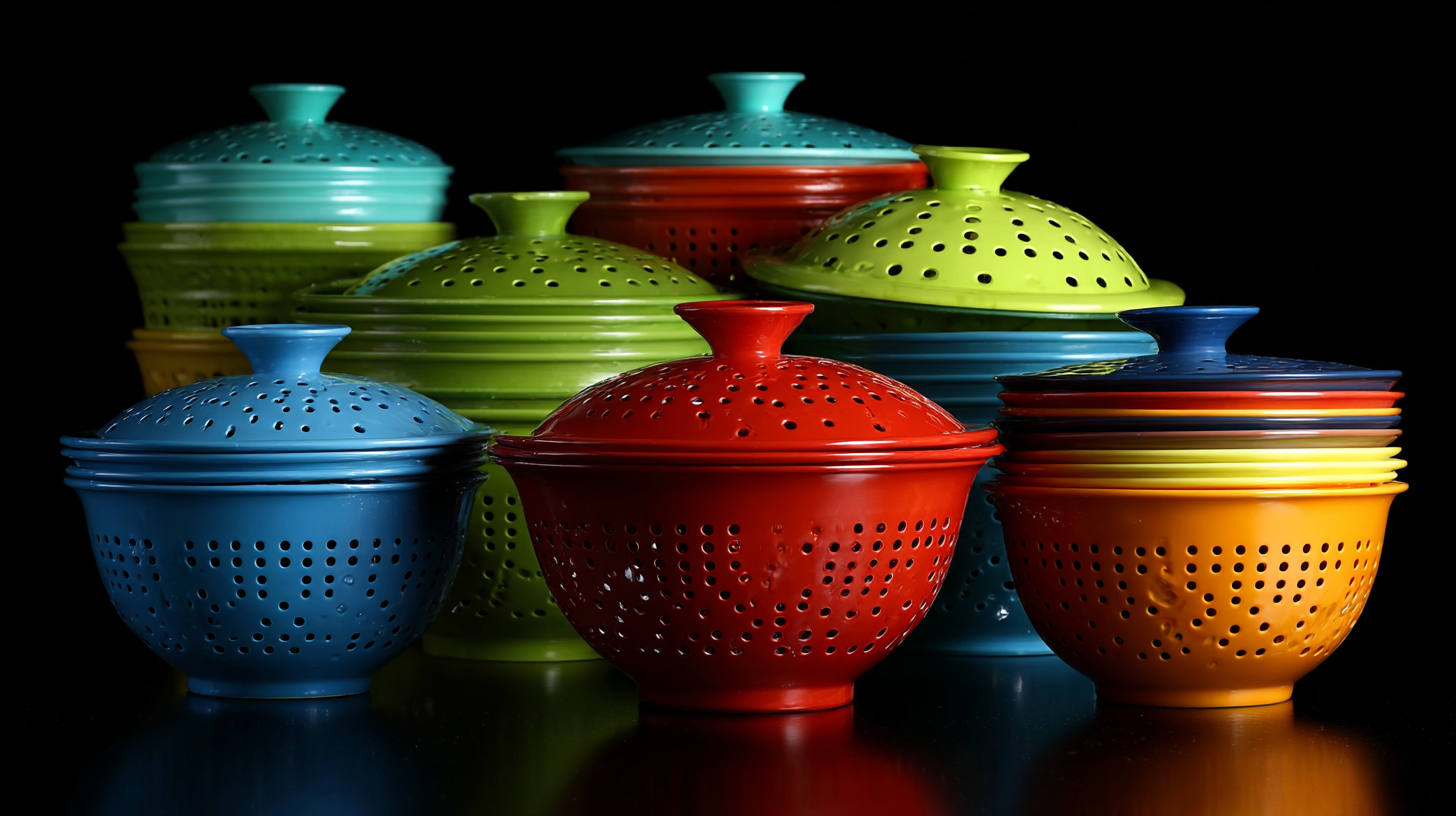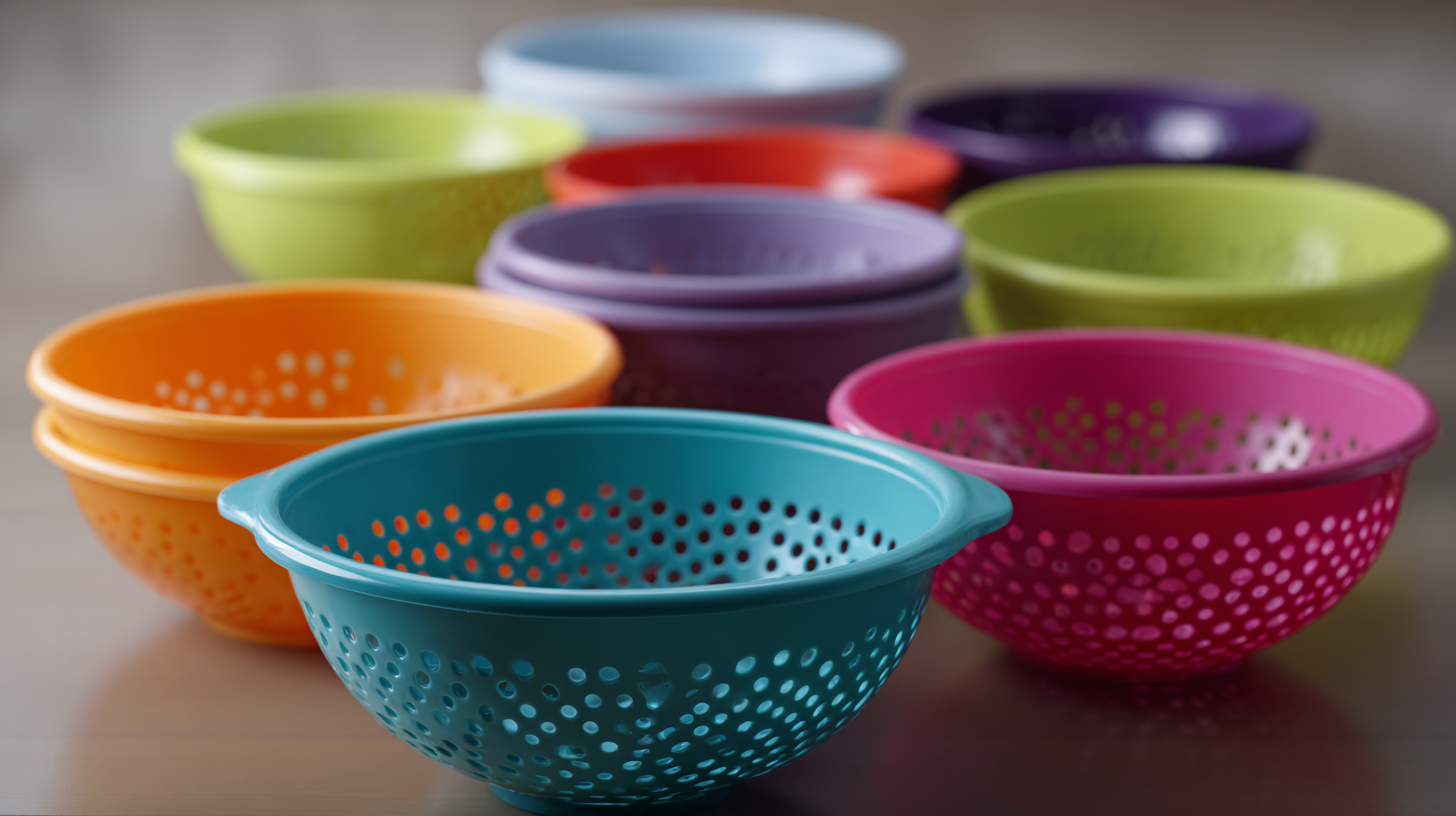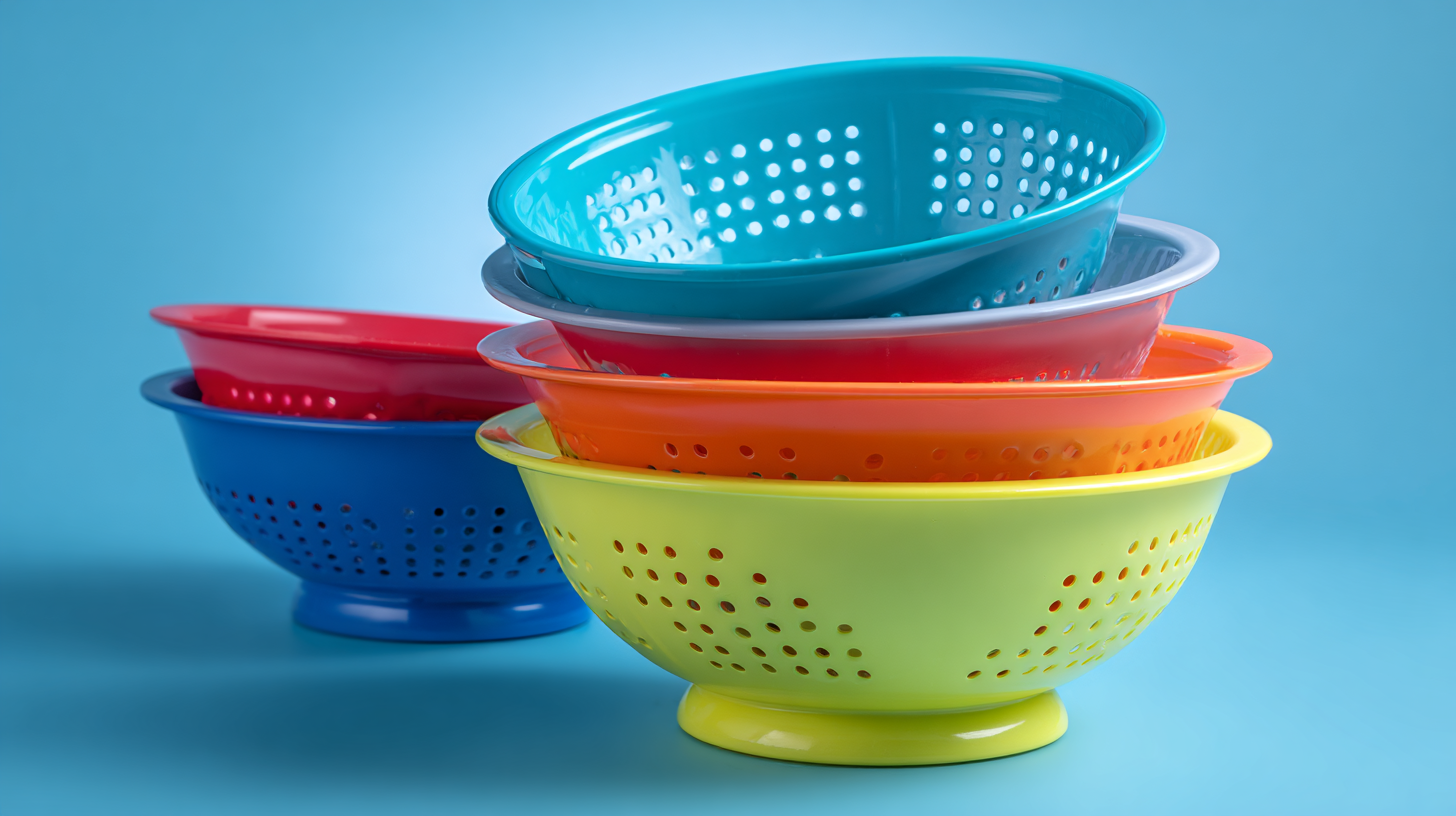Welcome to this website!

In the competitive landscape of global sourcing, selecting the right manufacturer for Colander Plastic is pivotal for ensuring product quality and meeting market demands. According to a recent report by Grand View Research, the global kitchenware market, including plastic items, was valued at approximately $23.9 billion in 2020 and is projected to grow at a CAGR of 4.5% through 2027. This growth underscores the rising consumer preference for convenience and durability, with colanders playing a crucial role in culinary preparation. As sourcing strategies evolve, manufacturers from China are increasingly recognized for their ability to provide high-quality plastic products at competitive prices. By making informed choices in manufacturer selection, businesses can leverage this trend to enhance their offerings and establish a stronger presence in the market.

When sourcing plastic colanders, understanding key features is essential for making informed decisions. First, consider the material used in the colander's construction. High-quality plastic should be food-safe, BPA-free, and durable enough to withstand frequent use. Look for colanders made from polypropylene or polyethylene, as these materials offer excellent resistance to heat and impacts, ensuring longevity even in busy kitchens.
Another critical feature to evaluate is the design of the colander, including its drainage capabilities and stability. A well-designed colander will have an adequate number of holes for effective water drainage while preventing smaller food items from falling through. Additionally, ergonomic handles can enhance usability, especially when straining heavier contents. The colander’s size and shape also play a significant role, as choosing the right dimensions can facilitate various cooking tasks, from rinsing vegetables to draining pasta. By focusing on these key features, you can confidently select quality plastic colanders that align with your global sourcing strategy.
When sourcing plastic colanders for global markets, evaluating the manufacturing standards is paramount. The reliability and quality of plastic colanders can vary significantly based on the manufacturer’s processes and certifications. Key factors to consider include the materials used, production techniques, and adherence to safety and quality regulations. It is essential to verify if the manufacturer follows international standards for plastic products, ensuring that the colanders are safe for food use and meet the durability expectations of consumers.
Additionally, examining the manufacturer’s track record in sustainability practices can provide further assurance of product quality. Brands that prioritize eco-friendly materials and responsible production methods not only contribute to environmental conservation but also appeal to a growing segment of environmentally conscious consumers. Assessing these aspects helps in choosing a manufacturer who not only meets your sourcing needs but also aligns with your values, ultimately supporting the success of your global sourcing strategy.

Balancing cost and quality in sourcing strategies is becoming increasingly important, especially in the context of global procurement. According to a recent review, the application of deep learning and machine learning in supply chain management (SCM) has shown significant improvements in supplier selection and inventory control. Companies leveraging these technologies can better analyze cost structures, enabling them to identify high-quality manufacturers within budget constraints. For instance, performing category-specific analyses can reveal viable alternatives to traditional sourcing methods, allowing firms to enhance resilience while managing costs effectively.

Furthermore, the increasing pressure on organizations to optimize budgets without compromising quality has led to innovative solutions in procurement practices. A notable insight revealed that over 40% of procurement teams struggle due to outdated manual processes, which hinders their ability to meet critical business needs. Emphasizing the integration of data-driven strategies can transform procurement into a function that not only reduces expenses but also drives significant value. This shift is essential for navigating the financial challenges in various sectors, including healthcare, where affordability and quality are paramount. Thus, aligning budgetary goals with strategic optimization of procurement can pave the way for a more efficient and effective sourcing strategy.
When selecting a manufacturer for plastic colanders, sustainability should be a primary consideration. As the world increasingly prioritizes environmental consciousness, choosing a manufacturer that adopts eco-friendly practices is essential. This means looking for companies that utilize recycled materials, implement energy-efficient manufacturing processes, and minimize waste production. By opting for manufacturers with a commitment to sustainability, businesses can enhance their brand’s reputation and appeal to a growing consumer base that values environmentally responsible choices.
Moreover, incorporating sustainability into your global sourcing strategy does more than just improve your brand image; it can also lead to long-term cost savings. Sustainable practices often involve innovative techniques that improve efficiency and reduce resource consumption. By fostering a partnership with a manufacturer that prioritizes sustainability, businesses can benefit from improved product quality and longevity, minimizing the need for frequent replacements. As the demand for eco-friendly products continues to rise, aligning with sustainable manufacturers can position your company as a leader in responsible sourcing in the competitive market of plastic goods.
| Manufacturer Location | Material Recycled % | Sustainability Certification | Min. Order Quantity | Lead Time (weeks) | Price Range ($) |
|---|---|---|---|---|---|
| USA | 30% | ISO 14001 | 500 | 4 | 15 - 20 |
| Germany | 50% | FSC Certified | 1000 | 6 | 20 - 25 |
| China | 25% | BSCI | 2000 | 8 | 10 - 15 |
| Italy | 40% | EU Eco-label | 750 | 5 | 18 - 22 |
When considering the production of plastic colanders, businesses face a critical decision between global and local sourcing. According to a report by the Global Manufacturing Alliance, companies that choose global sourcing often benefit from significantly lower production costs—up to 30% cheaper than local alternatives. This cost advantage stems from economies of scale and the access to materials that might not be readily available domestically. However, this approach also carries risks, such as longer lead times and potential quality inconsistencies, which can undermine the final product.
On the other hand, local sourcing offers a range of benefits that can enhance a company's supply chain resilience. Research from the Institute for Supply Management indicates that local suppliers can reduce delivery times by 50%, significantly improving inventory turnover and responsiveness to market changes. Additionally, supporting local manufacturers can enhance a brand's reputation, attracting environmentally-conscious consumers who prefer products with a lower carbon footprint. Ultimately, the decision between global and local sourcing should weigh both cost savings and the potential impact on brand integrity and customer satisfaction.
